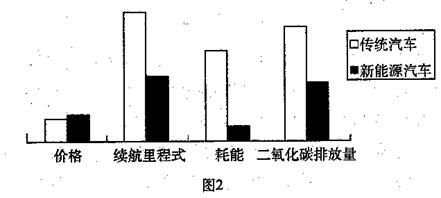

材料二 2011年6月初,胡 * * * * 视察东风汽车公司电动汽车发展情况时指出,要坚持以市场需求为导向,以科技创新为动力,突破更多核心关键技术,研发更多新型汽车产品,努力实现从 量的增长向质的跨越转变,为提升我国汽车工业发展水平再立新功。
量的增长向质的跨越转变,为提升我国汽车工业发展水平再立新功。
(1)图1反映了什么经济现象?(2分) 结合图2,分析图1中新能源汽车销量发生变化的原因。(2分)
(2)结合材料二,运用经济生活相关知识,为我国新能源汽车企业发展提出合理化建议。(8分)
(3)运用发展的观点分析说明新能源汽车的未来前景。(14分)
13.(1)中国汽车和新能源汽车销量逐年增加,但新能源汽车在汽车总销量中所占比重偏低。(2分)新能源汽车销量有所增加,是因为与传统汽车相比耗能低、二氧化碳排放量小(1分);在汽车总销量中所占 比重低,是因为在价格、续航里程方面不占优势。(1分)
比重低,是因为在价格、续航里程方面不占优势。(1分)
(2)面向市场,制定正确的经营战略(2分);加强管理和创新,形成在技术和价格等方面的竞争优势(2分);转变经济发展方式,提高自主创新能力(2分);开展国际化经营,培育国际知名品牌(2分)。
(3)发展的实质是事物的前进 和上升,是新事物的产生和旧事物的灭亡。(2分)
和上升,是新事物的产生和旧事物的灭亡。(2分)
事物发展的前途是光明的(事物发展的方向是前进的、上升的),(2分)新能源汽车在耗能、排放方面具有明显优势,符合客观规律,具有强大生命力和远大前途,前景乐观(2分)。因此我们对新能源汽车的未来前景充满信心,热情支持保护新能源汽车的发展。(2分)
事物发展的道路是曲折的,迂回的(2分)。新能源汽车不可避免地存在弱点和不完善的地方,人们对新能源汽车的认识也有一个过程(2分)。要做好充分的思想准备,迎接新能源汽车发展道路上的各种困难和挫折,不断促其发展壮大。(2分)
